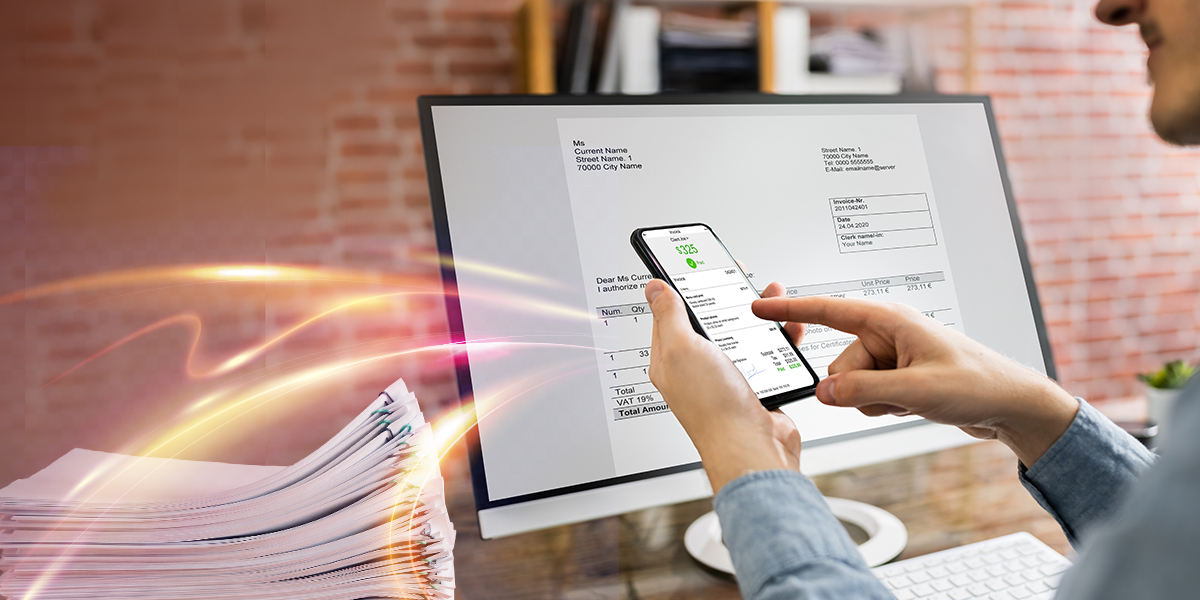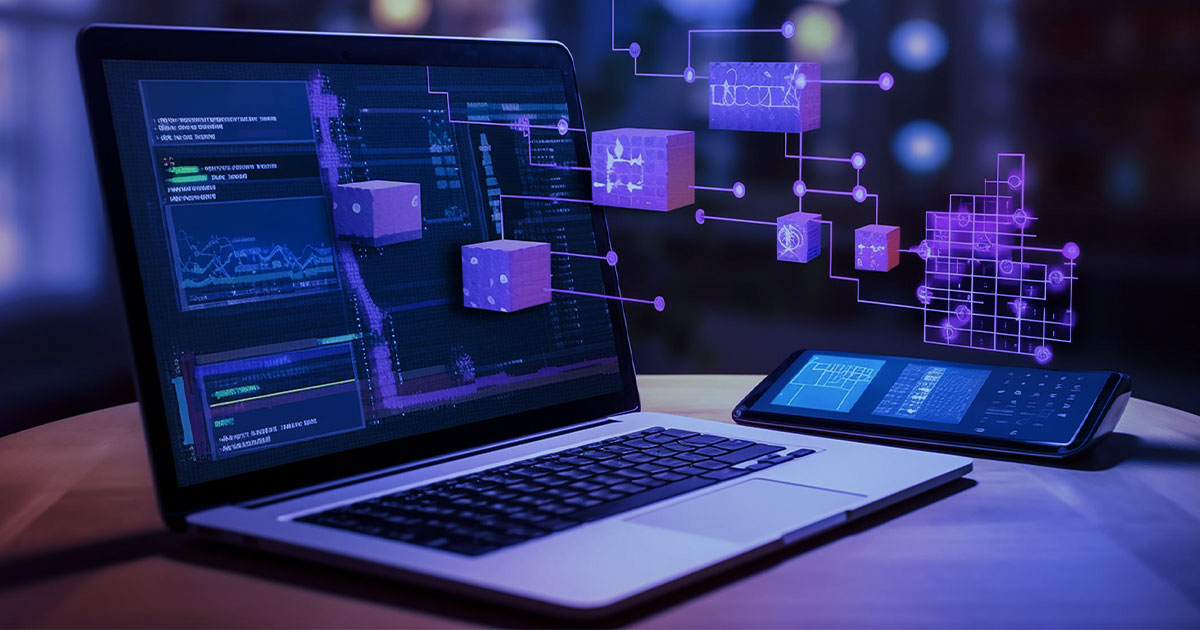



Finance automation has moved from 'good-to-have' to a 'must-have' capability for modern enterprises as we cement ourselves in the age of automation. Replacing error-prone manual processes has become a strategic priority for businesses across industries as the competition become global and the regulatory and compliance landscape resembles a veritable minefield.
Introducing automation to finance functions empowers finance teams to unlock their highest potential, allowing professionals to focus on strategies that aid business growth instead of simply crunching numbers.
Essentially, financial process automation is the application of technology to automate key financial processes. The Account Payables (AP) process is a prime candidate for automation as we will see soon.

Automating the AP process reduces the time spent on receiving invoices, coding, routing for approval, payment, and reconciliation. AP automation makes the financial back-end processes expeditious, efficient, and accurate.
Enterprises across the globe and industries are looking at AP automation for better visibility, greater control, improved risk management, and timely payments. Given the tangible impact of increasing cost-saving opportunities and the contribution toward improved decision-making, it is hardly a surprise to see the AP automation market on a growth trajectory. Analysis reveals that it's poised to grow to $7.5 billion by 2030.
Why is Accounts Payable (AP) Automation Critical?
The Accounts Payables process is highly complex, with multiple moving parts and many stakeholders. AP processes deal with invoices, orders, and checks associated with purchases and are the financial records that detail the transactions related to the buying and selling of products, services, and other resources.
Automating the AP process has assumed new urgency as the world of work shifts to hybrid, remote-hybrid and remote work. In this digital age, AP automation makes it possible to digitally generate purchase orders, make payments, reconcile accounts payable, look up vendor information and gain insights into accounts payable activities.
Besides, automating this process becomes crucial since:
- An increasingly digital world demands unique digital overhauling across departments – finance included.
- Manual, paper-based AP environments do not offer the agility that modern-day businesses need.
- Working through piles of paper invoices can impede velocity and open up the enterprise to fraud. It also makes invoice management and audits painful processes.
AP automation wards off the need for manual data inputs at any point. It converts suppliers' invoices into a standard digital format and pushes them through a digital workflow. All AP data is stored within a single system, making it much easier to locate information and simplify audits.
This form of automation drives down the processing costs, makes it much easier to manage payments and cash flows tightly and makes the payments process accurate, faster, and smoother. Less fraud, fewer errors, better compliance, and smoother audits emerge as the automatic consequences of this shift.
Automating the AP function, especially invoice processing, reduces overheads and helps manage discretionary spending. In fact, research shows that automating the AP and invoice processing function helps organizations cut costs by 81% and improve efficiency by 73%.

Invoice Processing Automation – The Perfect Automation Candidate
In the AP ecosystem, there are few functions as effort and time intensive as invoice processing. Gathering invoices, recording general ledger information, capturing invoice header and line-item data, matching invoices against purchase orders and proof-of-delivery documents, posting approved invoices, etc., can bring down any team in the absence of automation.
Plus, paper-based or semi-automated invoice processing processes lead to hidden costs that chip away at profit margins and net income. Poor cash flow visibility and spend management, processing errors, too many exceptions, fraud, and onerous regulatory compliance impede business success and profitability.
New technologies such as AI and deep learning make the invoice processing function uncomplicated and efficient. This is because these allow for rules-based decisions. Technologies such as deep learning also help this function intelligently classify data by ensuring the correct extraction of line items, purchase order and invoice numbers, and other data on invoices.
When automating the invoice process, the solution should:
- Ensure that the automation does not slow down the AP process while processing and managing complex invoices. As such, ensuring that the solution integrates seamlessly with workflows and systems across finance, ERP and procurement becomes crucial for success.
- Capably capture invoices and free-form expense reports, extract key fields into standardized structures and validate extracted data against enterprise systems for accuracy
- Employ adaptive deep learning models to improve processing accuracy over time and with every manual input
- Capably read, validate, and process data from different document types, including hand-written notes
- Allow for low-code customizations, enable role-based workflows, and integrate with existing systems for a complete, 360-degree view
- Enable automatic exception flagging that could reduce cycle time, highlight critical invoices, and ensure faster resolution of concerns.
- Eliminate mistakes that lead to double payments, such as mismatched invoices and POs, and provide granular clarity for better compliance management
- Offer flexible deployment options and easy deployment in the cloud, data center, or hybrid cloud for greater scalability, security, and availability
In Conclusion
As the world of work becomes increasingly disruptive, the finance department is emerging as a strategic partner to help enterprises navigate today's realities through constant recalibration.
As it stands, automation and related advanced technologies are pushing the finance department towards a digital future. This shift is allowing finance teams and professionals to focus less on transactional activities and more on analytics and insights.
Automating traditional finance processes such as AP and invoice processing delivers cross-functional insights and improves decision making. Organizations can then go beyond traditional KPIs and create forward-looking KPIs that improve customer satisfaction and treat data as capital.
Besides, the ability to navigate the compliance and regulatory framework easily enables global expansion. It contributes significantly to identifying ways to improve net liquidity by generating better discount terms on settlement dates as well.
Enterprises are looking at CFOs to deliver timely, accurate, and impactful information that enables strategic thinking and improves decision-making velocity. Automating financial processes such as Accounts Payables enables CFOs to help shift the organizational focus to do just that while contributing toward enterprise transformation.
How Xoriant Partners with AWS to Automate Invoice Processing?
Enterprises can benefit from automated systems that can read, validate, and process data from different document types including hand-written notes. Xoriant X·CELERATE Invoice is a smart solution leveraging Amazon Textract to eliminate tedious, error-prone manual data entry and improve the speed and operational efficiency of your enterprise invoice processing and reconciliation. It integrates with your current workflow, procurement, ERP and finance software and leverages an intuitive User Interface that learns from human oversight.
Looking to simplify Invoice Processing with X·CELERATE Invoice






 View Previous Blog
View Previous Blog





